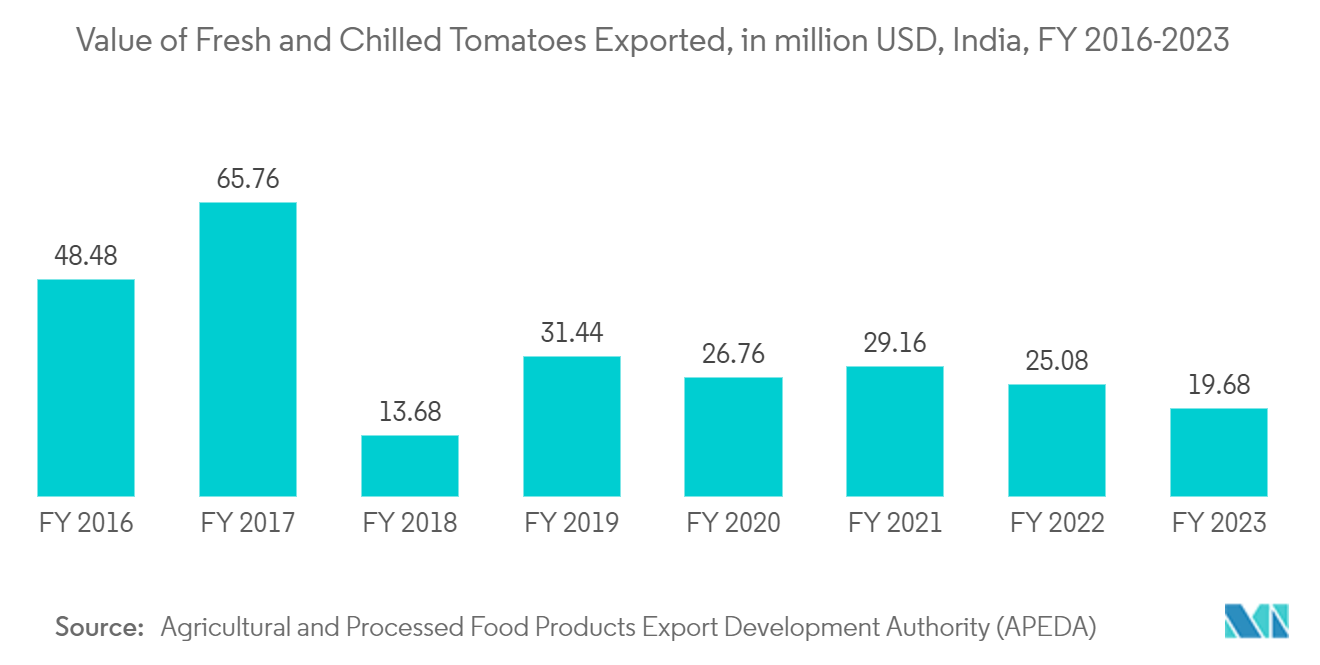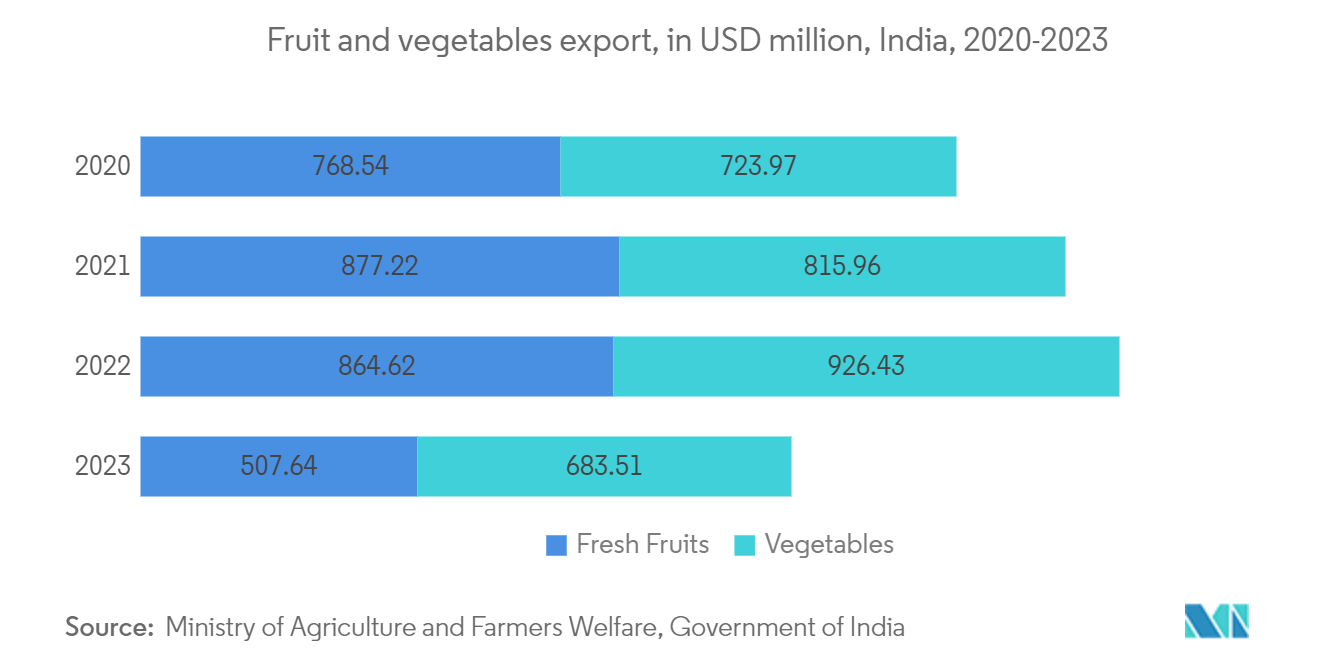Market Trends of India Cold Chain Logistics Industry
Chilled Segment is Gaining Huge Momentum in the Coming Years
- The expanding need for cold chain storage facilities and the increasing varieties of frozen commodities such as ice cream, meat, and seafood are moving the cold chain market ahead.
- Because frozen food products lengthen the storage time of foods by rendering them more inert, the frozen sector of the cold chain logistics market is expected to grow quickly during the projected period.
- Chilled foods, for safety or quality reasons, are designed to be stored at refrigeration temperatures (at or below 8ºC, targeting 5ºC) throughout their life.
- This method of freezing aids in slowing biological and chemical processes that cause food to decay and limit its shelf life. Frozen food has more nutrients than chilled food, which makes it more appetizing. The need for convenience is driving up consumer demand for frozen foods.
- According to the United Nations Food and Agricultural Organization (FAO), more than 40% of food losses occur during post-harvesting and processing, particularly in poor nations. This necessitates the establishment of long-term, energy-efficient cold chains capable of increasing food supply in these nations by about 15%, or over 250 million tons.

Asia-Pacific is Expected to Hold Significant Market Share
- India is the second-largest producer of fruits and vegetables, with its share in world production at 11.38% and 11.78%, respectively. India is the largest producer of mango, banana, guava, papaya, lemon, lime, and okra and the second-largest producer of potato, tomato, onion, cabbage, cauliflower, and brinjal. A study conducted by the ICAR-Central Institute of Post-Harvest Engineering & Technology (CIPHET) points out that in India, for fruits and vegetables, the post-harvest losses range from 4.58 to 15.88% of the country’s horticulture production. The Government of India, through the Mission for Integrated Development of Horticulture (MIDH), has enabled area expansion, the development of nurseries, and the construction of farm ponds.
- According to the sources, food grain output has consistently grown over the last decade from 257.1 million tons in 2012-13 to 315.6 million tons in 2021-22. Food grain production in 2022-23 is 30.8 million tons higher than the previous five years’ average. Fruit production is estimated to be 108.34 million tonnes in the year 2022-23 as compared to 107.51 million tonnes in the year 2021-22. The production of vegetables is estimated to be 212.91 million tonnes in the year 2022-23 compared to 209.14 million tonnes in the year 2021-22.
- India leads the world in the production of banana, papaya, mango, and guava, along with ginger and okra. During 2021-2022, India exported fresh fruits and vegetables worth USD 1.527.60 million, which comprised fruits worth USD 750.7 million and vegetables worth USD 767.01 million. India mostly exports to its neighbors, namely the UAE, Bangladesh, Pakistan, Saudi Arabia, Sri Lanka, and Nepal.

